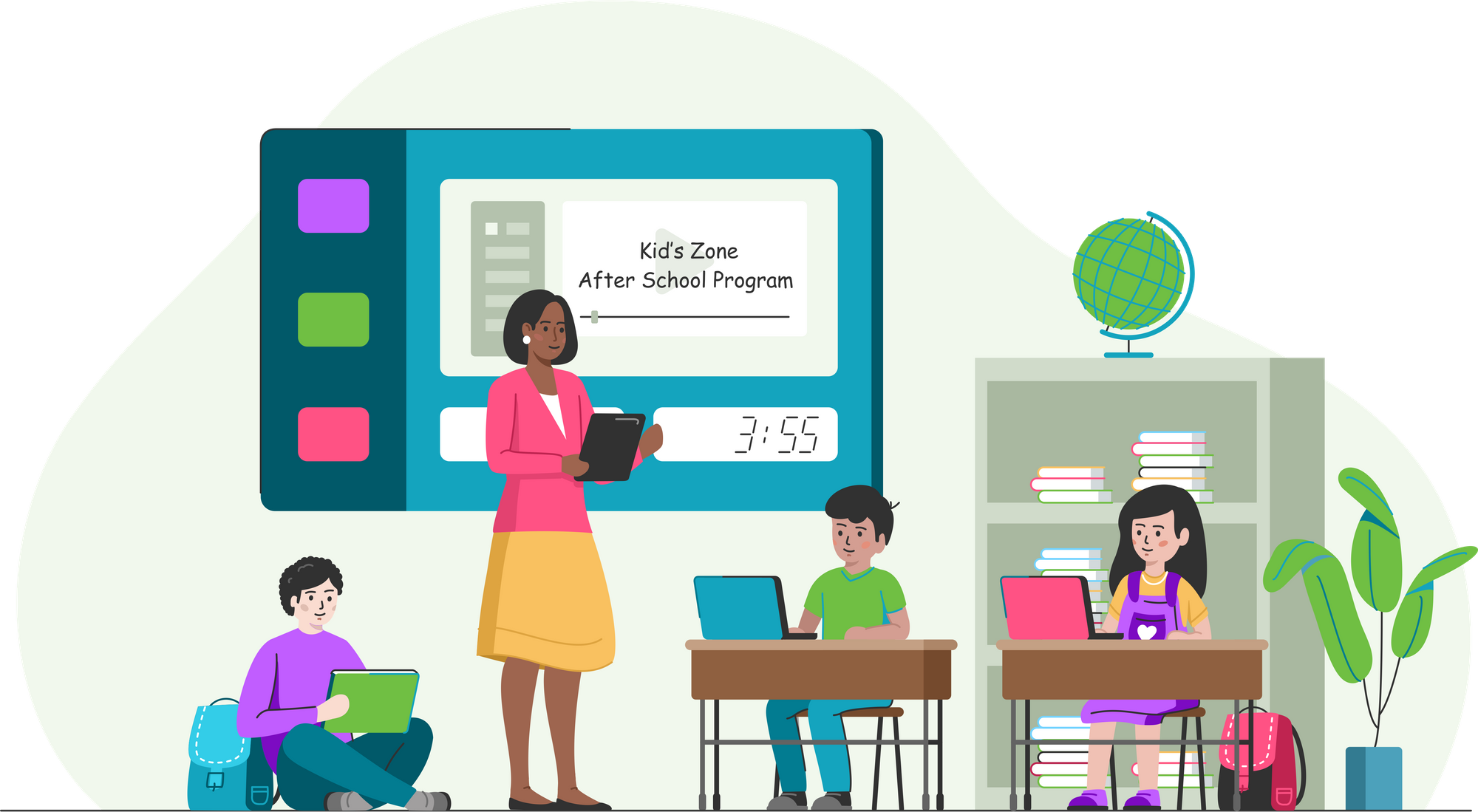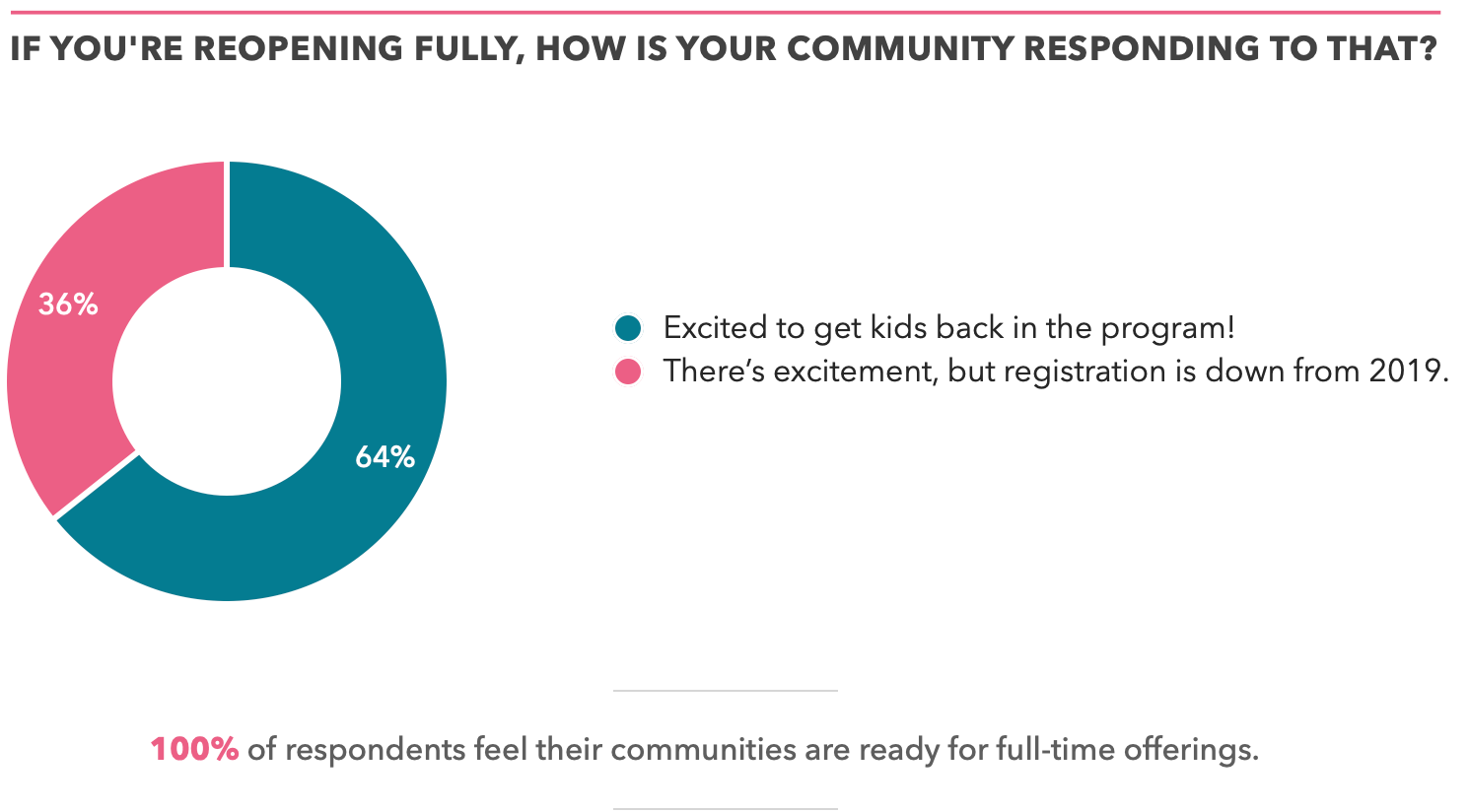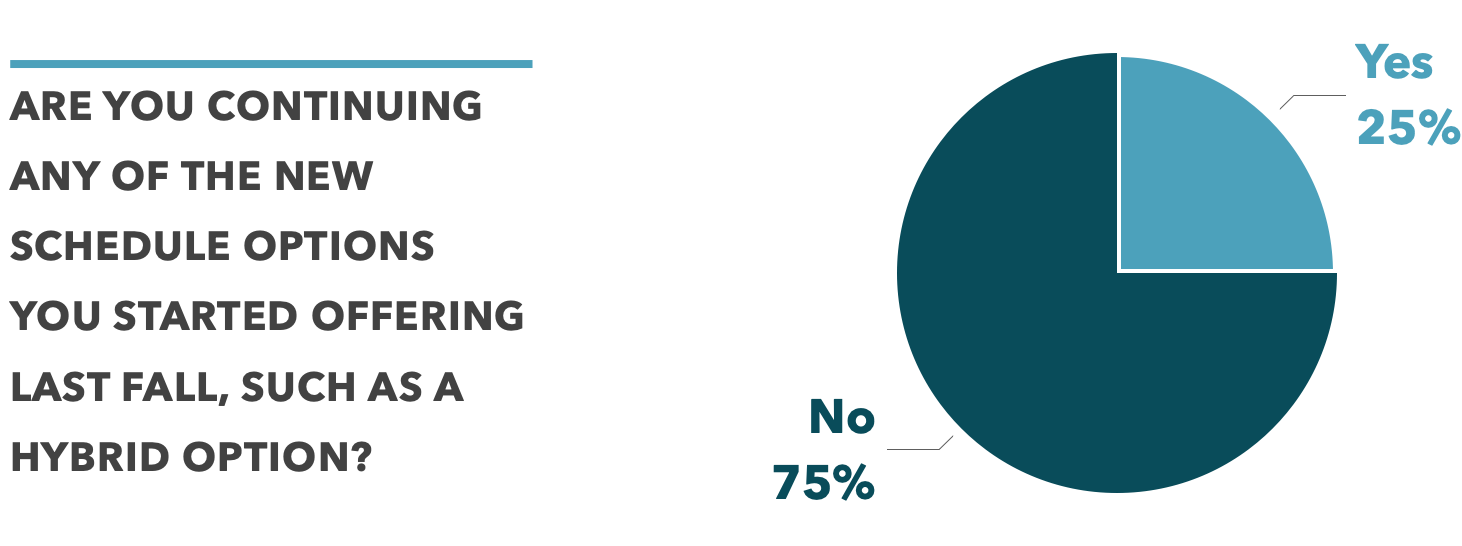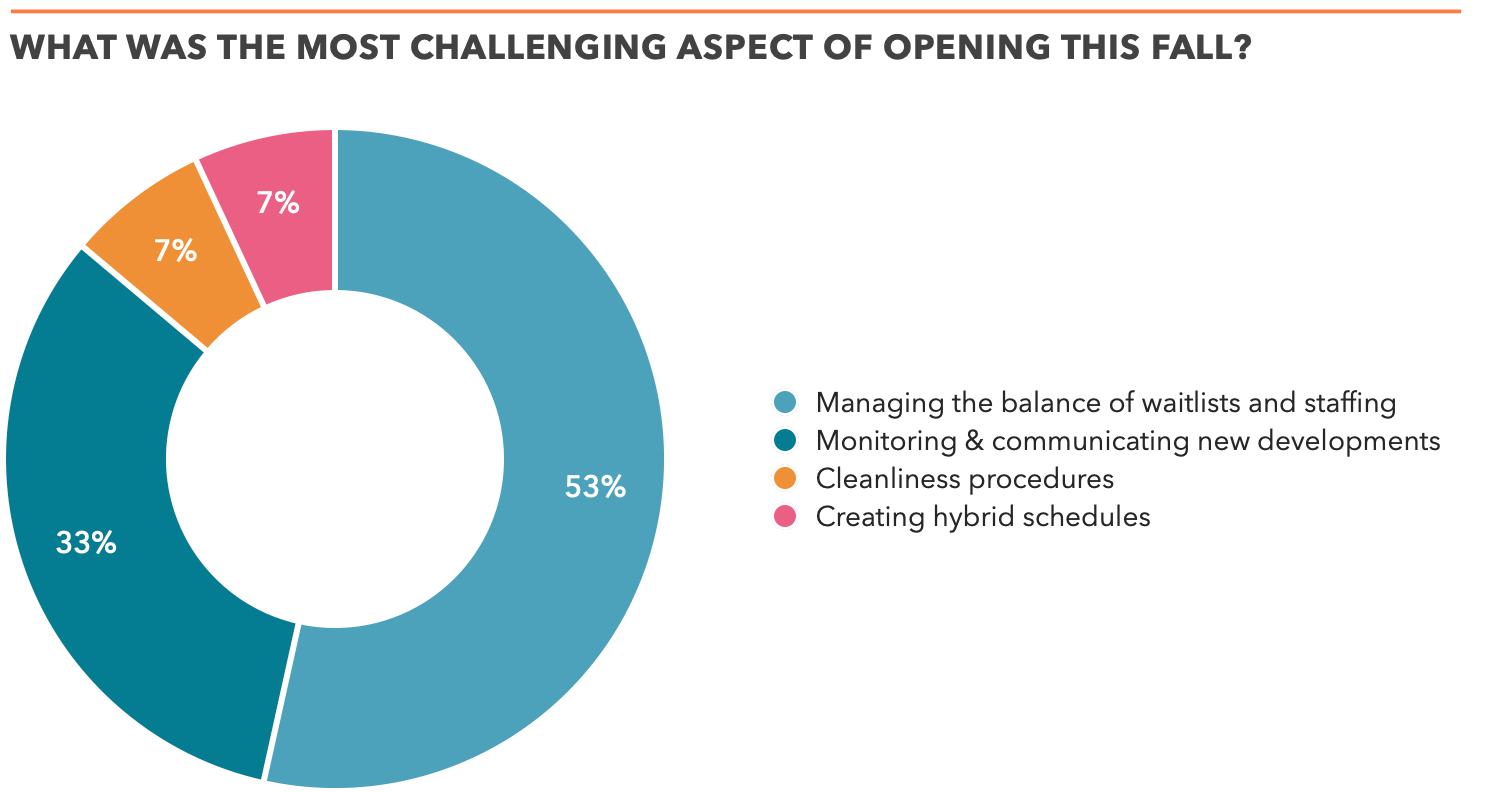It’s been 18 months since the start of the pandemic. Over that time, after school programs have been through two unique fall registration and back-to-school periods. During these periods, the industry has learned a lot, but there are still so many unknowns. How have programs adapted to change since Fall 2020? Has community response to before and after school care changed since Fall 2019?
We want to take a moment to pause, step back, and find these answers, focusing specifically on industry evolution since the pandemic began.

To get to the bottom of this, we surveyed 45 after school programs around the country. In this survey, after school program leaders discussed successes, challenges, solutions, and how their teams have grown to meet the changing landscape.
Discover these insights and more in our 2021 Back-to-School Study.
Rising to the occasion: after school programs quickly begin to rebound
Our 2021 After School Report, published in February, highlighted research showing faith in the overall after school industry rebound. Specifically, despite the pandemic market shakeup, the industry’s value is expected to maintain an annual growth rate of 3.9% through 2027.

This year’s Back-to-School Study survey allowed us to hear directly from after school programs, and what we have heard and analyzed is that the industry has already significantly rebounded from Fall 2020. The study shows that programs are operationally ready to scale their programs over time.
Let’s take a closer look.
Communities are embracing the return of after school programs
There were a lot of unknowns as districts prepared to open registration for this fall. It was the first time offering program registration for some programs since Fall 2019, while others have been operating since Summer 2020.
However, we discovered an encouraging indicator for industry growth in our survey findings. 100% responded that their community’s parents were excited to get their kids back into full-time care for programs that reopened this fall. What’s more, 0% of respondents feel their communities were not ready for full-time offerings.

Last year's challenges become this year's successes
Fewer hybrid schedules
Full-time programs are back. After school programs are responding as best they can to their community’s excitement for full-time programming. 75% of programs surveyed mentioned offering no hybrid schedules currently.
Compared to last year, the percentage of programs offering hybrid/online program scheduling is down 62%.

In correlation, last year, when we asked programs what the most challenging aspects of opening in the fall were? A majority answered, creating a hybrid schedule. This year, programs hardly acknowledged this as a challenge. A testament to the progress made.
Health and safety
In another sign of program adaptation and response, cleanliness procedures are dialed in across the board. Anecdotally, we heard from districts about how proud they were of offering responsible and safe care over the last 18 months.
“We offered our programs safely while adapting as guidelines, and COVID-19 rates continue to change.”
Similar to creating hybrid schedules, when asked what the most challenging aspect of planning for registration season was, districts did not consider building and implementing cleanliness procedures as a challenge compared to last fall.
A year of planning and adaptation has led to after school programs mastering offering safe programs for their communities.
“The Board of Education has created a mask matrix, which will be reviewed weekly. We’ve communicated to families that the health and safety of our students, staff, and families remains a priority for all of us in the district. The school district is monitoring the COVID-19 infections in our school and the community.”

A new year with new challenges
While the survey findings reflect growth and optimism, they also bring new opportunities to light.

Managing the balance of waitlists and staffing
Faced with smaller teams and growing excitement from parents to place kids in programs, after school leaders are tasked with balancing waitlists and staffing. Over 50% of our survey respondents mentioned this as their most significant challenge of reopening this fall. We’ll touch on some other numbers around staffing and some potential solutions from districts a little later on.
Monitoring and communicating developments to the community
With the rise of the Delta variant over the summer, the situation around the pandemic remains fluid. As such, after school programs still consider monitoring and communicating developments to the community a significant challenge. Compounded by short staffing and rolling waitlists, this task can largely fall on one or two members of an after school team.
Exploring staffing solutions
It’s widely known that staffing is one of the most pressing challenges facing the industry that the pandemic has even exacerbated. 92% of districts we surveyed indicated their program was experiencing staff shortages.
How are programs responding to this challenge with only so much in their control in terms of financial incentives? We asked for some immediate and long-term solutions.

Realigning
25% of programs surveyed mentioned some form of staff and/or program realignment as a short-term solution to help alleviate short staffing issues. Examples include consolidating sites with free transportation, sending staff to different locations, and reaching out to other district employment groups to assist.
Getting creative with marketing and recruiting
Marketing your program is just as important for internal employees as it is for families in your community. Program leaders discussed digital marketing, social advertising, and strategic in-person recruiting at places like college campuses and local high schools as steps programs are taking to solve staffing issues.
Rolling waitlists
With staff shortages, it wasn’t surprising that 64% of survey respondents indicated having a waitlist this year for programs. However, in an encouraging sign for slowly increasing staff, we heard from many programs that their waitlists were going down as the fall went on, and their program could open more sites. Across our survey respondents, the average waitlist size was 134 students.

“Our waitlist started with 450 across 13 campuses. We’re now down to 350 in two weeks as we continue to hire staff.”
Moving forward with the commitment to quality of care
As after school programs master some solutions and navigate new challenges, it’s clear they do so with a commitment to quality of care. Districts demonstrate patience, preparedness, and perseverance while keeping morale up despite a challenging school year and summer. After school teams shared successes of:
- Marketing their program earlier, promoting families to register weeks before the school year
- Providing fun, engaging activities for students to participate in
- Adapting to change while still caring for youth and families
- Completing a smooth registration process with no complaints
With these successes, after school leaders feel like opening their programs this fall has been more successful than Fall 2020.
The after school industry faces certain challenges today. Still, compared to the challenges of a year ago, when obstacles were creating hybrid schedules, implementing health and safety protocols, and simply opening programs, we see a year of significant growth. As you continue to grow your programs over the next nine months, take a moment to pause, step back, and see how far you’ve come.
It's our time to shine.



